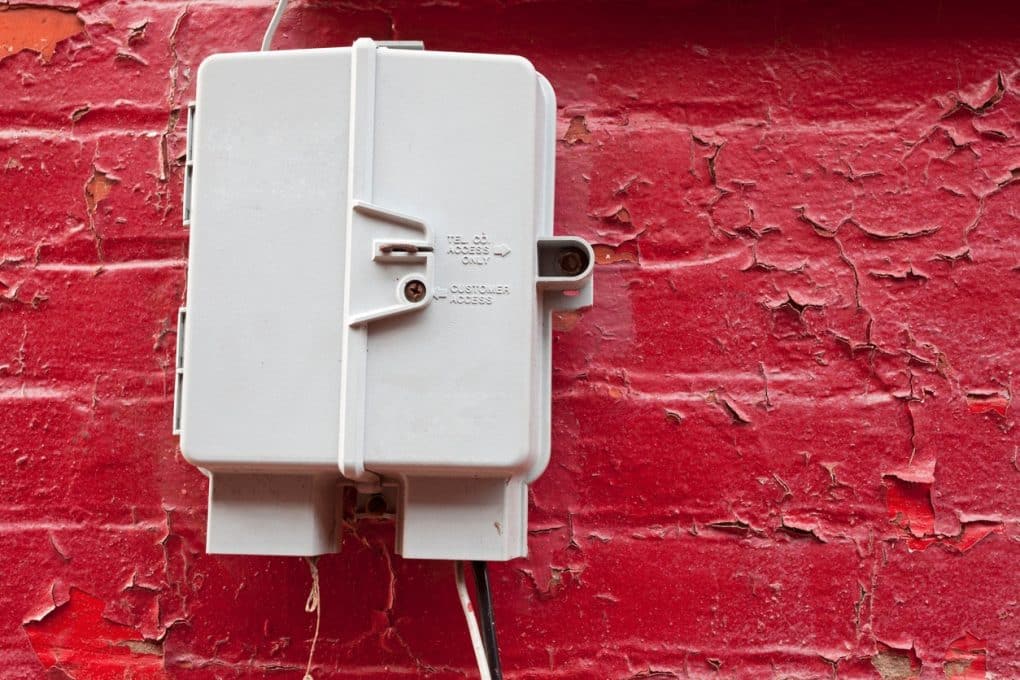Phone downtime can significantly damage a business’s productivity, profits, reputation and customer loyalty; businesses should address any phone outages or failures quickly to minimize losses. Diagnose and determine the appropriate course of action to fix common business landline issues with the following steps.
Determine Whether the Problem Is Internal or External
The first step to diagnosing a landline issue is to pinpoint where the problem originates. This will determine whether the fix is the provider’s or the business’s responsibility.
If all office phones exhibit symptoms of a connectivity issue – no dial tone, static, unusual noises or dropped calls, the problem is most likely external and up to the service provider to fix. If only one or some phones are experiencing issues, the cause is likely internal, and the fix is your team’s or hired technicians’ responsibility.
Test the External Connection with the Network Interface Device (NID)
Use your Network Interface Device (NID) to check the landline’s external connection. The NID is typically a gray box that hangs on an outside wall, or in a closet or basement. Many require a screwdriver to open.
Test external connectivity with your Network Interface Device (NID).
Unplug a problematic line inside the NID and plug a working phone into the same jack, repeating for each symptomatic line. If the problem persists when the working phone is plugged in, the external connection is faulty. Contact your provider for external repairs.
If the test seems to fix the problem, the issue is internal, and usually not within the scope of the provider’s services.
Troubleshooting an Internal Phone Issue
Internal wiring jobs can be complex and time-consuming, and often require a paid technician’s help. However, a few quick steps can help identify the source of the problem and possible solutions.
If static comes through on multiple lines, one piece of equipment may be interfering with the others. First, ensure the phone cords are at least three feet away from all other cords and electronic devices. Next, listen to the static on one phone as you disconnect each line one at a time. When the static clears, the last unplugged item is most likely the culprit and should be repaired, rewired or replaced.
If only one phone exhibits a problem, check the equipment by replacing the phone and then the cord with working alternates using the same jack. If this does not work, try plugging the phone into a different jack: The jack itself could be faulty.
Equipment malfunctions or improper settings cause other common issues like persistent beeping, routing calls straight to voicemail and the inability to hear or be heard by the other party. Consult the phone’s manual and try turning off alerts, checking call forwarding settings, toggling the mute button and changing the batteries. If none of these work, the phone itself may be faulty and need replacing.
Digital and Hybrid Service Issues
Many businesses choose more modern digital or hybrid VoIP solutions to avoid landline issues. However, these solutions also suffer some common problems. Start troubleshooting digital and hybrid by testing phone equipment with the methods listed above and confirming a strong internet connection.
If the internet and equipment are functioning normally, offices with digital landlines should check their provider’s T1 box: the light’s red color and flashing pattern indicate the problem source. Refer to the provider’s troubleshooting page or manual to interpret the light pattern and identify the source of the issue.
Landline-VoIP hybrid systems often experience problems with the Analog Telephone Adapter (ATA), which allows analog phones to connect to a VoIP network. Check the lights on your office’s ATA. Like a T1 box, the light color and pattern indicate the source of the issue.
If the network, equipment and provider hardware are all functioning normally, the problem is likely the provider’s responsibility; contact customer service for help.
Tip: Parts for older phone equipment may be hard to find. Investment in such hardware is a recipe for stress and lost time.
Ditch the Troubleshooting with a VoIP Solution
Most existing landline infrastructures are over 30 years old, and aging equipment causes frequent problems that are difficult to resolve; sometimes even providers are unable to fix issues when outdated parts are no longer available. A testament to landlines’ increasing irrelevance in the modern business world, some major providers like AT&T are moving to exit the landline business altogether.
To avoid costly and time-consuming phone problems, consider a more efficient option. Many companies are switching to VoIP solutions to avoid landline hassles and benefit from complex call forwarding, toll-free or vanity numbers, fax-to-email and other features expected of a modern office. Since VoIP functions over an existing network, it’s typically much cheaper than landline service. The best part? Cloud-based VoIP data centers are supplied and managed by a third-party provider; repairs and their associated costs are their responsibility.
To learn more about flexible and easy-to-use VoIP solutions with free 24/7 support for your office, schedule a free demo with one of our subject matter experts today.
{{cta(’49a1cc64-e83c-494f-beed-7380520b1b3e’)}}









